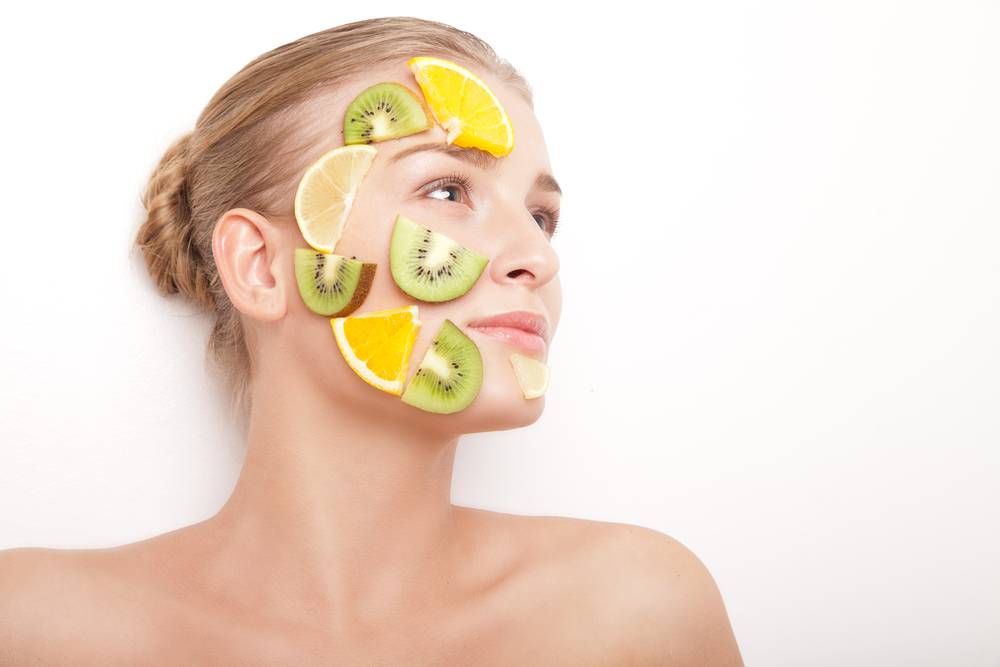Vitamin C in cosmetics: forms, effects, opinions
Being a strong antioxidant, vitamin C is labelled a vitamin of youth and one of the best skin-conditioning ingredients among cosmetic chemists and cosmetologists. Ideally, it should be mixed with fat-soluble vitamin E (tocopherol) since they make a great duo preventing the oxidation of cells.
Vitamin C isn’t produced by human body, therefore, we need to deliver it with food and skin care products like moisturizers or (ideally) serums. Cosmetics with vitamin C are important: even if you have lots of meals rich in vitamin C, its amount in the skin is not impressive, plus it is gradually reduced due to the activity of free radicals.
Qualities of vitamin C
- seals blood vessels through affecting the synthesis of collagen type I and III which is a supportive substance for blood vessels;
- has an anti-inflammatory effect;
- brightens the skin, blocks the creation of melanin i.e. skin pigment;
- evens the skin tone;
- strengthens UV protection, reduces redness caused by UVB rays.
Do you know…
… the effectiveness of vitamin C depends on its concentration in a product?
A recommended content of vitamin C in cosmetics is approx. 15%. This is the only safe and skin-enhancing amount. In order to increase the concentration of vitamin C, a cosmetic is enriched with silicones which make the product more stable and durable.
Another way for increasing the concentration of vitamin C is using powder vitamin C with a carrier, that is peptides, which keeps the vitamin from dissolving too fast. Also, vitamin C is often subject to micronization and “stored” in liposomes.
Vitamin C in cosmetics: types & forms
1. L-ascorbic Acid
Too bad, active form of vitamin C is very unstable. It oxidizes due to external factors (temperature, oxygen, light, improper pH) and consequently loses its valuable qualities. Pure form of vitamin C is recommended for oily, acne-prone skin and to treat excessive sebum secretion.
Benefits of L-ascorbic acid:
- high effectiveness
- rapid effect takes form of illuminated, even skin tone.
Bad sides of L-ascorbic acid:
- instability,
- numerous irritations on sensitive skin,
- necessity for adding alcohols and glycols to products (so-called transit facilitators),
- low pH of the acid is required (lower than 3,5).
2. Ascorbyl Palmitate
Contrary to pure form of vitamin C, this one is very stable since it’s fat-soluble. In deep skin layers it is released very slowly so it’s the least active form of vitamin C; most common in after-sun products.
Benefits of Ascorbyl Palmitate:
- better stability,
- slow release of ascorbic acid,
- milder form than pure vitamin C,
- stable at a neutral pH.
Bad sides of Ascorbyl Palmitate:
- poor skin permeability,
- not absorbed well by the skin,
- results take long to appear.
3. Ascorbyl Glucoside
It is able to penetrate deep skin layers. Vitamin C derivative which acts both inside epidermal layers and in the dermis. It is water-soluble yet keeps its bioactivity in the skin longer. Ideal for sensitive skin.
Benefits of Ascorbyl Glucoside:
- more stable in comparison to pure vitamin C.
- good benefits for skin at a higher pH.
- penetration into deep skin layers.
Bad sides of Ascorbyl Glucoside:
- possibility of skin irritations.
4. Tetrahexyldecyl Ascorbate
This form of vitamin C has high effectiveness and absorption.
Skin-friendly, its oil form is similar to skin’s lipid layer. Too bad, it’s also the most expensive form of active L-ascorbic acid.
Benefits of Tetrahexyldecyl Ascorbate:
- the most effective form of vitamin C.
- works even in low concentration.
- a very stable form.
- skin-friendly form of oil.
- long-term antioxidant effect.
- great skin benefits at a high pH.
Bad sides of Tetrahexyldecyl Ascorbate:
- the priciest derivative of vitamin C.
- slower antioxidant effect.
5. 3-0-Ethyl Ascorbic Acid
3-0-Ethyl Ascorbic Acid is the newest, most brilliant derivative of L-ascorbic acid which is very stable. It is resistant to the light and temperatures, brilliantly penetrates the skin and blocks the development of bacteria, as well as fights off all kinds of inflammation. As the only form of vitamin C, it is soluble both in fats and water. Perfect for all types of skin, incl. sensitive skin.
Benefits of 3-0-Ethyl Ascorbic Acid:
- very stable in various conditions.
- resistant to the light and temperature.
- has an antibacterial effect.
- as the only derivative it’s an amphiphilic molecule.
- deep penetration inside the skin.
- an excellent antioxidant.
Bad sides of 3-0-Ethyl Ascorbic Acid:
- works a bit more slowly than pure form of vitamin C.

